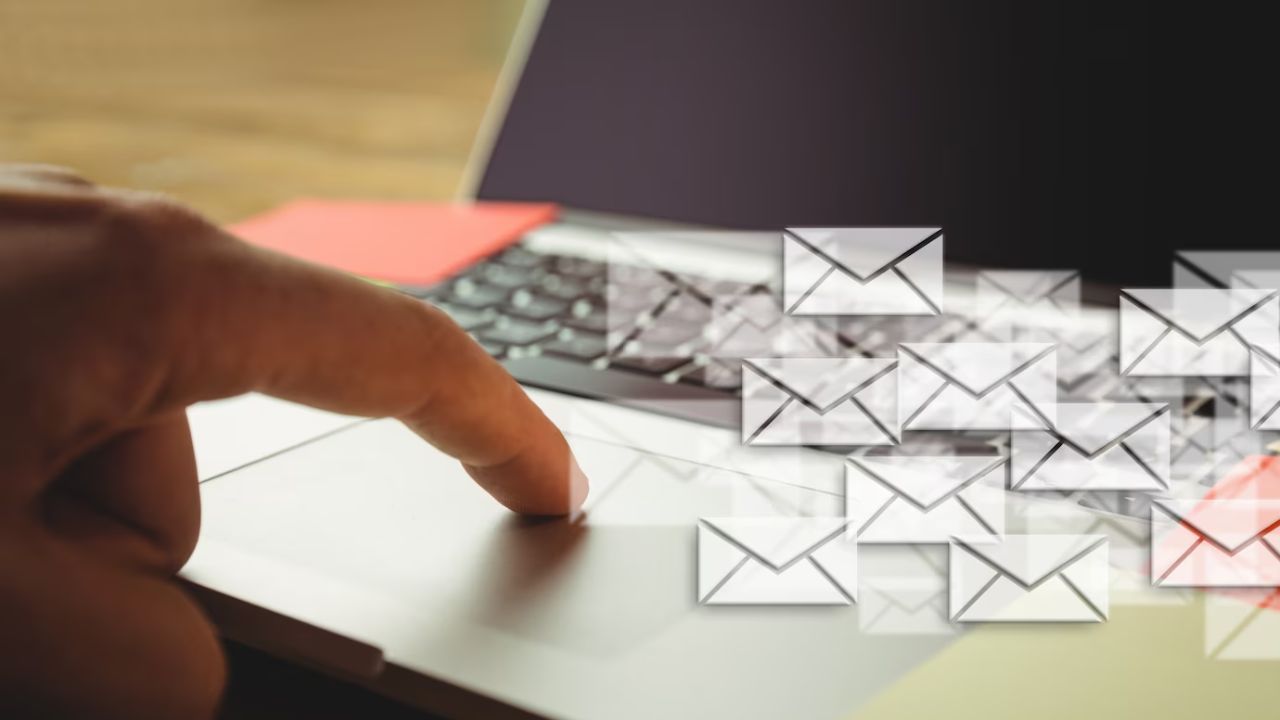
How to Use Automated Email Marketing and Boost Conversions

Athika Rahma
SEO Specialist Virtual Assistant at SGBVA
- March 21, 2025
- Remote Work Tips
Automated email marketing is one of the most powerful tools for businesses looking to scale customer engagement, nurture leads, and drive revenue. When done right, it delivers personalized, timely, and relevant messages to your audience—without requiring constant manual effort. But how can you leverage email automation effectively?
In this in-depth guide, we’ll cover everything from the fundamentals of automated email marketing to advanced strategies that can help you boost conversions and maximize ROI.
What is Automated Email Marketing?
Automated email marketing is the process of sending pre-scheduled or trigger-based emails to subscribers based on their behaviors, actions, or predefined criteria. It allows businesses to engage customers at the right time with relevant content while reducing manual effort.
Instead of manually crafting individual emails for each subscriber, businesses set up email workflows that run on autopilot—delivering personalized experiences at scale.
Here’s a breakdown of how email automation functions:
- Define Triggers – An action (such as signing up for a newsletter, making a purchase, or abandoning a cart) triggers an email sequence.
- Set Up Email Sequences – A series of automated emails designed to guide the subscriber toward a goal (e.g., completing a purchase or staying engaged with your brand).
- Segment Your Audience – Using data like behavior, demographics, and interests to tailor messaging.
- Personalize Content – Leveraging subscriber details (name, purchase history, location) to make emails feel more relevant.
- Measure & Optimize – Tracking key metrics (open rates, CTRs, conversions) to continuously improve performance.
Why Automated Email Marketing is a Game-Changer
If you’re still manually sending emails, you’re missing out. Here’s why automated email is essential:
1. Saves Time & Boosts Efficiency
Automation eliminates repetitive tasks, allowing your marketing team to focus on strategy rather than execution.
2. Increases Engagement & Personalization
Emails triggered by user actions feel more relevant than generic mass emails, increasing open rates and engagement.
3. Drives Higher Conversions & Sales
Personalized, behavior-based emails (such as cart recovery or product recommendations) help convert subscribers into paying customers.
4. Improves Lead Nurturing
Drip campaigns educate and build trust with leads, guiding them smoothly through the buyer’s journey.
5. Provides Valuable Analytics
Automated email platforms offer detailed insights into subscriber behavior, campaign performance, and ROI, helping you refine your marketing strategy.
Read more: How to Land Email Marketing Jobs Remote as a Virtual Assistant in 2025
Types of Automated Emails & Examples
Here are the most effective types of automated email marketing campaigns, with real-world use cases:
1. Welcome Email Sequences
The welcome email is your first impression—it sets expectations and builds rapport.
Trigger: A new subscriber joins your list.
Example:
- Subject: “Welcome to [Brand Name]! Here’s What to Expect”
- Content: A warm introduction, value proposition, and call-to-action (e.g., “Check Out Our Bestsellers”)
2. Drip Campaigns (Lead Nurturing Emails)
Drip campaigns guide leads through a structured journey, gradually leading them to a purchase decision.
Trigger: A subscriber downloads a free resource or signs up for a webinar.
Example:
- Email 1: “Thank You for Downloading! Here’s Your Free Guide”
- Email 2 (Day 3): “How [Product/Service] Can Help You [Achieve Benefit]”
- Email 3 (Day 7): “See How Others Have Transformed with [Product/Service]”
- Email 4 (Day 10): “Exclusive Discount Just for You!”
3. Abandoned Cart Recovery Emails
A well-timed reminder (often with an incentive) can recover lost revenue.
Trigger: A customer adds items to their cart but doesn’t complete the purchase.
Example:
- Subject: “Oops! You Left Something Behind…”
- Content: Image of the abandoned product, a reminder, and a CTA (“Complete Your Purchase Now”) with a discount.
Read more: 10+ Jobs That You Can Work From Home in 2024
4. Post-Purchase Follow-Ups
Keeps customers engaged, encourages repeat purchases, and enhances satisfaction.
Trigger: A customer makes a purchase.
Example:
- Email 1 (Day 1): Order Confirmation & Thank You
- Email 2 (Day 5): Product Care Tips & FAQs
- Email 3 (Day 14): Request for Review or Referral Incentive
5. Re-engagement Emails (Win-Back Campaigns)
Encourages inactive users to re-engage with your brand.
Trigger: A subscriber hasn’t opened an email or made a purchase in X days.
Example:
- Subject: “We Miss You! Here’s 15% Off to Welcome You Back”
- Content: A friendly message, special offer, and CTA to revisit your website.
Best Practices for Automated Email Marketing Success
Setting up email automation is just the first step. To get the most out of it, you need to follow best practices that ensure your emails are engaging, effective, and well-received by your audience. Here are the automated email marketing strategy to maximize your results:
1. Choose the Right Email Automation Platform
There are many automated email marketing platforms available, and choosing the best one depends on your business size, goals, and budget. Some popular options include:
- Mailchimp – Great for small businesses with easy-to-use automation features.
- Omnisend – Ideal for e-commerce, with deep integrations for abandoned cart recovery and product recommendations.
- HubSpot – Best for businesses that need CRM integration with email automation.
- Klaviyo – A go-to option for e-commerce brands looking for personalized email flows.
- ActiveCampaign – Offers advanced automation with AI-driven insights.
What to look for:
- Advanced segmentation and personalization options.
- Pre-built automation workflows.
- A/B testing capabilities.
- Integration with other marketing tools (CRM, e-commerce platforms, analytics tools).
Take time to explore the features and pick a platform that aligns with your business needs.
Read more: 15 Free Virtual Assistant Resources Tools Guide to Boost Your VA Business
2. Understand Your Audience & Segment Your List
One-size-fits-all emails don’t work. Your audience consists of different types of customers, each with unique needs. Segmentation allows you to send highly relevant, targeted emails instead of generic messages.
Here are key ways to segment your email list:
- By Behavior: Identify how subscribers interact with your brand—track past purchases, browsing history, and email engagement.
- By Demographics: Categorize based on factors like location, age, industry, or job role.
- By Engagement Levels: Separate active subscribers from inactive ones and create re-engagement campaigns accordingly.
- By Purchase History: Identify repeat customers, first-time buyers, and those who haven’t completed a purchase.
Example of segmentation in action:
- A customer who recently made a purchase receives a thank-you email with product recommendations.
- A user who abandoned their cart receives a reminder email with a limited-time discount.
- An inactive subscriber gets a special offer to encourage them to return.
3. Set Up Triggers & Automated Workflows
Automation works best when emails are triggered at the right moment based on subscriber actions. You need to create a workflow that moves users through different touchpoints without manual intervention.
Common Automated Workflows:
Trigger Event | Email Workflow Example |
New Subscriber | A welcome email sequence introducing your brand. |
Cart Abandonment | A reminder email with an incentive to complete the purchase. |
Inactive Subscriber | A re-engagement campaign with a special offer or survey. |
Post-Purchase | Order confirmation, product usage tips, and review request. |
Birthday or Anniversary | A special discount or personalized greeting. |
4. Craft Compelling & Personalized Emails
Even with automation, emails should feel human and personal. Every message should deliver value while encouraging subscribers to take action.
Key elements of a high-performing email:
- Personalization: Use dynamic tags to include the subscriber’s first name, location, or purchase history (e.g., “Hi {First Name}, we picked these just for you!”).
- Engaging Subject Lines: Keep them short, clear, and intriguing (e.g., “You Forgot Something in Your Cart!” or “Welcome to [Brand] – Here’s Your Exclusive Gift”).
- Concise & Scannable Content: Use short paragraphs, bullet points, and clear formatting to make your message easy to read.
- Strong Call-to-Action (CTA): Guide readers toward the next step (e.g., “Claim Your Discount” or “Complete Your Purchase”).
- Mobile Optimization: Ensure emails look good on all devices. Over 50% of emails are opened on mobile, so test responsiveness before sending.
Example:
Subject: “Your Exclusive 10% Discount is Waiting!”
Header: “A Special Treat for You, {First Name}”
Body:
“We noticed you’ve been browsing [Product Name], and we wanted to offer you 10% off to make your decision easier. But hurry—this offer expires in 24 hours!”
CTA: “Claim Your 10% Discount”
Read more: How Do I Pitch Myself as Virtual Assistant (5 Easy Ways + Examples)
5. Test, Optimize, and Improve
Automation doesn’t mean “set it and forget it.” To maximize your email marketing success, you need to constantly analyze and improve your campaigns.
Key metrics to track:
- Open Rate: The percentage of subscribers who opened your email.
- Click-Through Rate (CTR): How many people clicked on links inside your email.
- Conversion Rate: The number of recipients who took the desired action (purchase, sign-up, etc.).
- Unsubscribe Rate: Indicates if your emails are irrelevant or sent too frequently.
How to improve your emails:
- A/B Test Subject Lines – Experiment with different tones (urgent, friendly, curiosity-driven) to see what gets more opens.
- Optimize Send Times – Test different days and times to determine when your audience is most active.
- Refine Your CTA Buttons – Try different colors, wording, and placements to see which drives the most clicks.
- Monitor Deliverability – Avoid spammy words in subject lines and ensure your emails aren’t landing in junk folders.
Master Email Marketing
Automated email marketing is a powerful tool that helps businesses scale communication, increase engagement, and drive sales effortlessly. By setting up smart email workflows, you can reach your audience at the perfect moment with the right message—boosting both customer experience and revenue.
Email marketing is a crucial role in any business, and the demand for remote email marketing professionals is growing. If you’re interested in learning more, join the SGB VA Course!
You’ll gain essential email marketing skills to kickstart your remote career or build your own VA business. Plus, the curriculum is always updated with the latest industry trends.
Want to learn more? Start by joining our free webinar! Sign up now through the link below.
Ready for More? Join Our Free Webinar!
Click the button and register right now!








